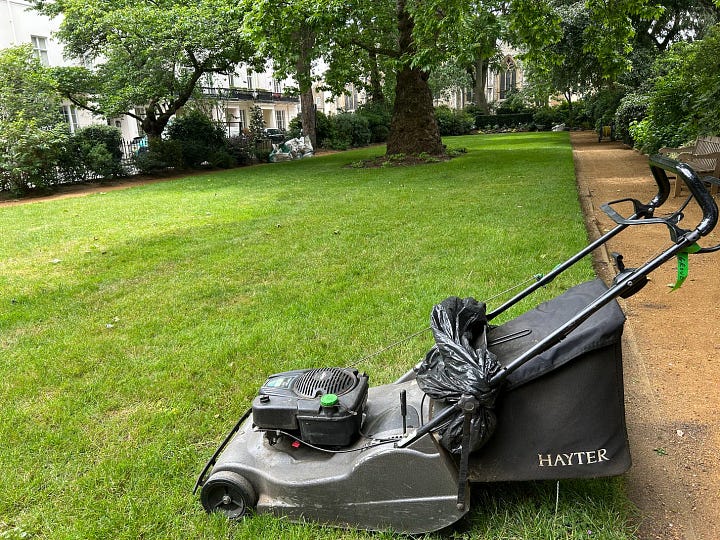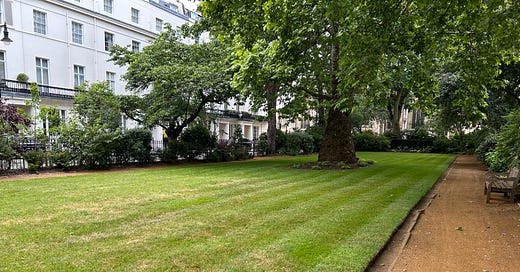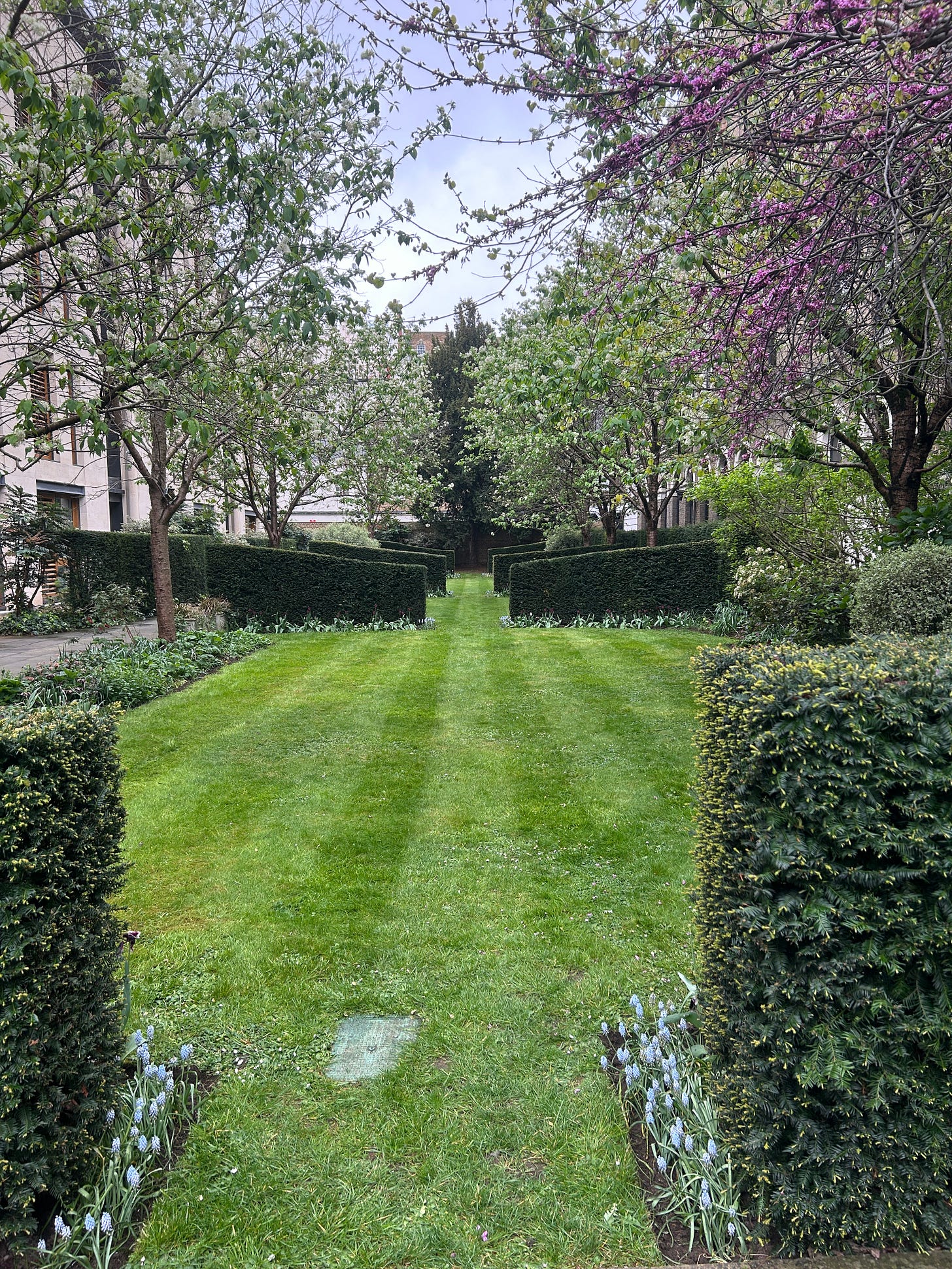I love lawns… yes I admit it. I know this can be immensely unpopular and controversial, but I can’t help how I feel. I completely understand how bad they can be for biodiversity and how harmful the chemicals are used on golf courses to keep them neat. But my fundamental belief is that gardens and parks are places for people to use, and lawns provide an essential way for people to interact with those gardens.
Lawns are where kids run around and play. It’s where they do cartwheels. It’s where they play sports. And if you are like me when I was a kid, it’s where you play with figures pretending it’s a jungle. For adults, lawns are where you can lay down and relax. Soak up some sunshine, breathe fresh air, and really connect to nature. It’s where you literally go outside and touch the grass. Laying down in grass allows actually tactile connection with plants that no other experience can give. And I’m sorry, but nothing instils in me the feeling of summer than the smell of freshly cut grass. Without the space that lawns create in your gardens, it’s incredibly difficult to actually use your garden. And if you stop using something, you very quickly stop appreciating it.

Lawns can are also be a very useful tool for garden design. They can be used to create paths to encourage people on journeys, whilst also tying different beds and sections of your garden together. And striping a lawn in different ways can be a useful to tool to alter your gardens size or even draw you eye towards a focal point.
Now of course I’m not suggesting we ignore the negative impact lawns have on the environment and biodiversity. I do not use any chemicals on my lawns, allowing many other plants like clover and daisies to encroach into it. I also keep a section of my lawn uncut all summer to create a habitat for many insects and invertebrates. I’m just saying we shouldn’t stop having lawns completely, just maintain them in an environmentally friendly way.
Lawn Care Tips
So in the spirit of loving lawns again, here are my eco tips on how to keep them looking best during the summer.
Cut little and often. Like all plants, the grass in your turf can get stressed if you cut a lot off it in one go. You also interfere with the root to leaf growth balance. So mowing just a little off the grass each week is better than letting it get too long.
Cut your grass in different directions. If you cut your grass in the same way each, the grass begins to grow in that direction and get too long. Ideally you should mow at a 90 degrees angle to the previous cut each time.
Try mulch mowing. Instead of collecting your grass cuttings, let them fall on your lawn. They quickly rot down, adding much needed nutrients to your soil and reducing the need for chemical fertiliser. This only really works well if you cut just a little bit off your lawn, otherwise large clumps of grass cuttings can kill off the lawn beneath it.
Pick the right mower. Cylinder mowers use a scissor-like action to cut grass, creating a cleaner cut, but only work on short grass that’s level. Rotary mowers additionally suck up leaves and debris off the lawn whilst cutting, but tear the grass leaves rather than cut them. Fly-mowers work on a cushion of air, so are great for mowing damp lawns or those on slopes, but do not collect any clippings.


Raise the height during hot periods. Short grass means more of the soil is exposed to evaporation, so cutting it less short means it retains more water in drought periods.
If you do have to water your lawn, do it in the evening and only do it lightly and often. Water can easily run off dry and compacted lawns, so to save water you need to do it carefully every couple of days.






Great post!